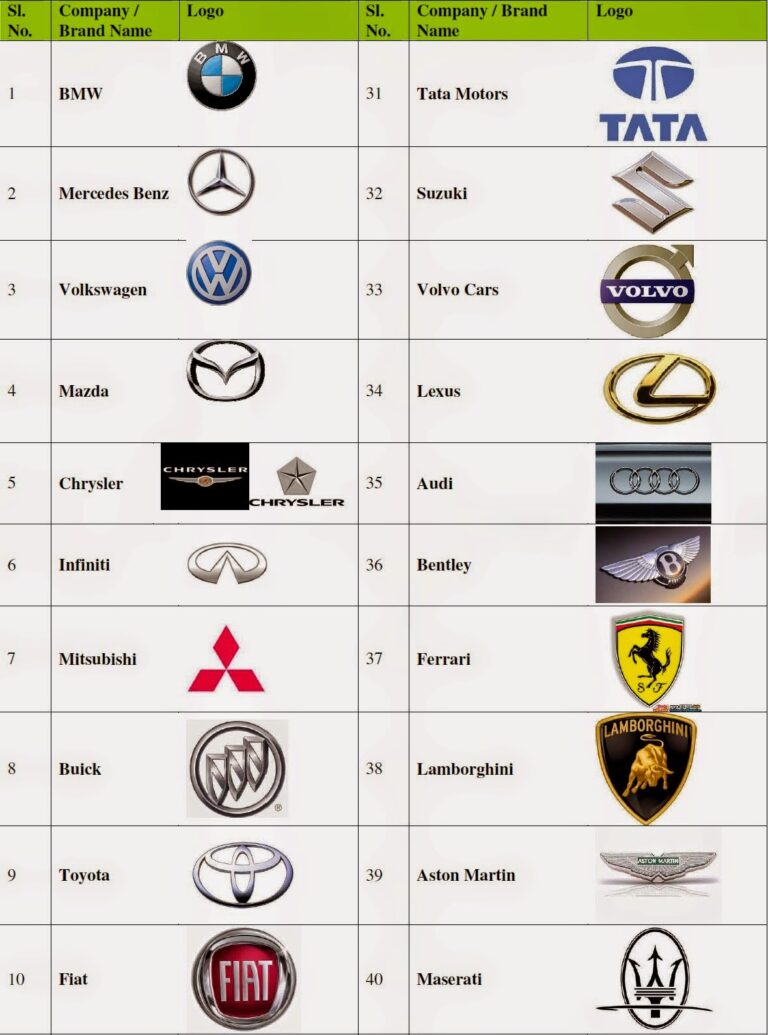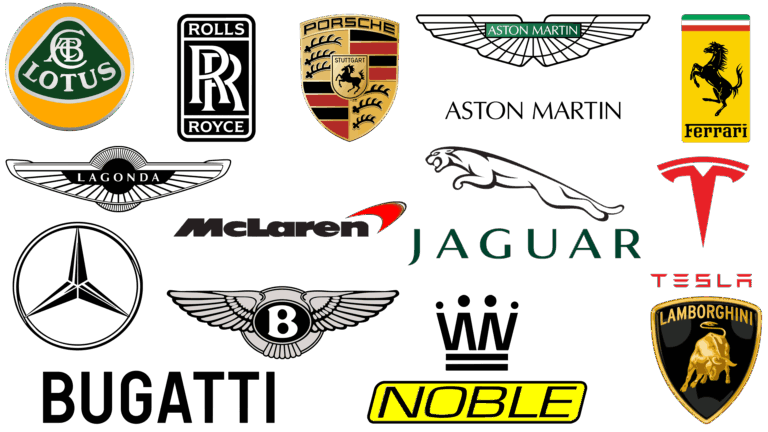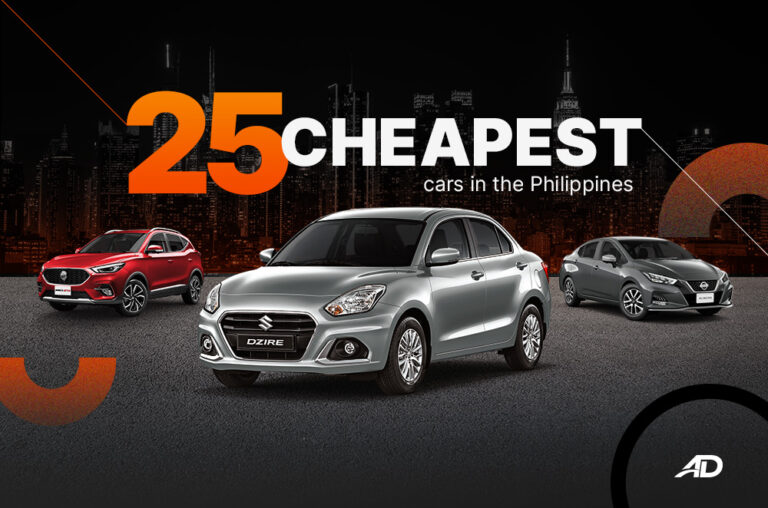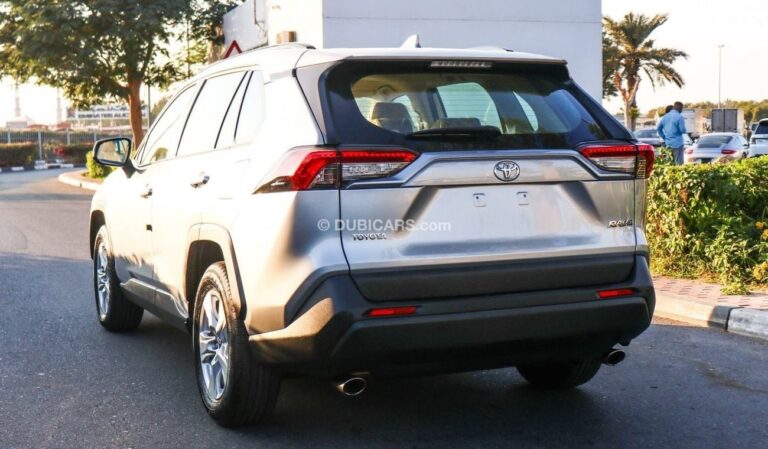Semi-Luxury Car Brands: The Sweet Spot Between Mainstream and Opulence
Semi-Luxury Car Brands: The Sweet Spot Between Mainstream and Opulence cars.truckstrend.com
Introduction: Defining the Semi-Luxury Segment
In the vast and varied landscape of the automotive industry, there exists a unique and increasingly popular niche that caters to discerning buyers who seek more than just basic transportation, yet aren’t ready to plunge into the often exorbitant world of high-end luxury vehicles. This is the realm of "semi-luxury" car brands. These marques masterfully bridge the gap between mass-market affordability and ultimate opulence, offering a compelling blend of premium features, refined performance, superior comfort, and sophisticated design without the dizzying price tags or intimidating maintenance costs associated with true luxury behemoths.
Semi-Luxury Car Brands: The Sweet Spot Between Mainstream and Opulence
Semi-luxury cars are more than just upgraded mainstream models; they represent a distinct tier defined by a commitment to elevated craftsmanship, advanced technology, and a driving experience designed to feel truly special. For many, they represent an aspirational yet attainable goal, a smart investment in daily comfort and understated prestige. Understanding this segment is crucial for anyone looking to maximize their automotive budget while enjoying a taste of the finer things on the road.
Understanding the "Semi-Luxury" Niche
The concept of semi-luxury isn’t about compromise; it’s about intelligent prioritization. These brands carve out their identity by focusing on delivering core luxury attributes – quality materials, advanced technology, refined driving dynamics, and distinctive styling – at a more accessible price point.
What defines a semi-luxury car?
At its core, a semi-luxury vehicle stands apart through:
- Enhanced Materials & Build Quality: Expect higher-grade leatherette or genuine leather, soft-touch plastics, authentic wood, aluminum, or carbon fiber accents, and a general sense of solidity and meticulous assembly.
- Advanced Technology & Features: Cutting-edge infotainment systems, comprehensive driver-assistance suites (ADAS), premium audio systems, intuitive connectivity options, and innovative comfort features are standard or readily available.
- Refined Performance & Driving Dynamics: While not always focused on raw speed, these cars offer smoother power delivery, quieter cabins, more composed suspension tuning, and precise steering, contributing to a more serene and engaging driving experience.
- Distinctive Design: Semi-luxury cars possess an aesthetic appeal that elevates them beyond their mainstream counterparts, often incorporating more elegant lines, unique grilles, and sophisticated lighting signatures.
- Brand Prestige: While not as exclusive as a Bentley or Rolls-Royce, brands in this segment carry a reputation for quality, reliability, and a certain level of status that sets them apart from the everyday commuter car.

How does it differ from mainstream?
Mainstream vehicles, even in their top trims, often lack the consistent level of refinement, bespoke engineering, and premium materials found throughout a semi-luxury car. The difference is often felt in the quieter cabin, the smoother ride over bumps, the tactile quality of the switchgear, and the overall sense of effortlessness in operation. Mainstream brands might offer some luxury features, but semi-luxury brands build the entire vehicle around a premium experience.
How does it differ from full luxury?
Full luxury brands (like Mercedes-Benz, BMW, Audi, Porsche, or Land Rover) often command significantly higher prices due to:
- Exclusivity & Heritage: A longer history of luxury, bespoke customization options, and often more limited production runs.
- Ultimate Performance & Engineering: More powerful engines, advanced chassis technologies, and often more extreme performance variants.
- Opulent Materials: Hand-stitched leather, exotic wood veneers, crystal accents, and other truly high-end materials.
- Brand Cachet: An undeniable prestige and status symbol that comes with decades, if not centuries, of luxury branding.
Semi-luxury brands offer 80-90% of the luxury experience at 50-70% of the price, making them an incredibly compelling value proposition.
Key Characteristics of Semi-Luxury Vehicles
Diving deeper, here are the hallmarks you can expect from vehicles in this desirable category:
- Design & Aesthetics: Expect sophisticated exterior styling that prioritizes elegance, clean lines, and a distinctive brand identity. Interiors are thoughtfully designed, often minimalist yet warm, with an emphasis on ergonomic layouts and aesthetically pleasing material combinations.
- Interior Quality & Comfort: This is where semi-luxury truly shines. High-grade materials are standard, from supple leather seats that offer exceptional support to soft-touch surfaces on the dashboard and door panels. Cabins are meticulously insulated to minimize road and wind noise, providing a serene environment. Heated and ventilated seats, multi-zone climate control, and ample passenger space are common.
- Technology & Infotainment: Modern semi-luxury cars are packed with tech. Intuitive infotainment systems with large touchscreens, smartphone integration (Apple CarPlay, Android Auto), premium sound systems (Bose, Harman Kardon, Mark Levinson), and advanced navigation are standard. Driver-assistance systems like adaptive cruise control, lane-keeping assist, blind-spot monitoring, and automatic emergency braking are almost universally included.
- Performance & Driving Dynamics: While not always track-focused, semi-luxury vehicles offer refined powertrains that deliver smooth acceleration and confident passing power. Transmissions are typically smooth-shifting automatics. Suspension systems are tuned for a comfortable, composed ride, effectively absorbing road imperfections while maintaining stable handling through curves.
- Safety Features: Given their premium positioning, these cars often incorporate the latest active and passive safety technologies, frequently achieving top safety ratings from organizations like the IIHS and NHTSA.
- Brand Perception & Service: Owning a semi-luxury car often comes with a higher level of customer service at dealerships, including comfortable waiting areas, loaner vehicles, and personalized attention. The brand itself often conveys an image of reliability, quality, and a commitment to customer satisfaction.
Top Contenders in the Semi-Luxury Segment
Several automotive brands have successfully carved out a strong presence in the semi-luxury space, each with its unique strengths and appeal:
- Acura (Honda’s Luxury Arm): Known for its sporty driving dynamics, innovative technology, and legendary Honda reliability. Acura offers a compelling blend of performance and practicality, often at a very competitive price point. Models like the TLX sedan and RDX/MDX SUVs are popular choices.
- Buick (General Motors’ Premium Brand): Buick has undergone a significant transformation, focusing heavily on comfortable, quiet cabins and a strong lineup of SUVs. They offer a refined, American-flavored luxury experience, often emphasizing smooth rides and user-friendly technology. The Enclave and Envision are key players.
- Genesis (Hyundai’s Luxury Arm): A relatively new but rapidly ascending player, Genesis has quickly earned accolades for its bold, distinctive designs, exceptionally luxurious interiors, strong performance, and outstanding value. Models like the G70, G80, and GV70/GV80 SUVs punch above their weight class.
- Infiniti (Nissan’s Luxury Arm): Infiniti often emphasizes distinctive styling and a more performance-oriented driving experience, particularly in its sedans. They offer a comfortable and well-equipped alternative, though their lineup has seen less refresh than some competitors. The Q50 sedan and QX60 SUV are mainstays.
- Lexus (Toyota’s Luxury Arm): Widely regarded for unparalleled reliability, exceptional refinement, and whisper-quiet cabins. Lexus vehicles deliver a supremely comfortable and worry-free ownership experience, often with strong resale values. The ES sedan and RX SUV are perennial best-sellers.
- Volvo: Hailing from Sweden, Volvo is synonymous with safety, minimalist Scandinavian design, and comfortable, elegant interiors. They have embraced electrification and sustainable practices, appealing to buyers who value understated luxury, environmental consciousness, and cutting-edge safety. The XC60 and XC90 SUVs are highly popular, as are their S60/S90 sedans.
Benefits of Choosing a Semi-Luxury Car
Opting for a semi-luxury vehicle offers a plethora of advantages that make it a compelling choice for many buyers:
- Enhanced Driving Experience: Enjoy a noticeably smoother, quieter, and more composed ride compared to mainstream cars. The engines are often more responsive, and the transmissions operate with greater seamlessness.
- Superior Comfort & Features: Indulge in premium materials, ergonomically designed seats, and advanced climate control systems. The technology integration is often more intuitive and comprehensive, enhancing convenience and enjoyment.
- Exceptional Value Proposition: Semi-luxury cars provide a significant percentage of the luxury experience for a fraction of the price of full-fledged luxury models. This makes premium ownership more attainable.
- Prestige & Status: While not as ostentatious as some high-end brands, owning a semi-luxury vehicle conveys a sense of sophistication and success, setting you apart from the crowd without being overly flashy.
- Advanced Safety: These vehicles are typically at the forefront of automotive safety, incorporating the latest active and passive safety features to protect occupants.
- Often Strong Reliability & Resale (Brand Dependent): Brands like Lexus and Acura are renowned for their long-term reliability and tend to hold their value well, minimizing ownership costs over time.
Important Considerations When Buying a Semi-Luxury Car
While the benefits are clear, it’s essential to approach a semi-luxury purchase with a clear understanding of potential considerations:
- Budget Beyond Purchase Price: Remember that while the initial MSRP is lower than full luxury, insurance premiums, maintenance costs, and parts can still be higher than for mainstream vehicles. Research these costs for your chosen model.
- Depreciation: Semi-luxury cars, like most vehicles, depreciate. While some brands (Lexus, Acura) fare better, others might see faster depreciation than certain mainstream models. Consider this if you plan to sell or trade in relatively soon.
- Maintenance & Parts Cost: Be prepared for potentially higher labor rates at specialized dealerships and more expensive replacement parts compared to a Toyota or Honda. Regular scheduled maintenance is crucial to preserve your investment.
- Features vs. Price: Don’t get carried away with every available option. Prioritize the features that genuinely enhance your driving experience or daily needs. Over-optioning can quickly push a semi-luxury car into full-luxury price territory.
- Test Drive Thoroughly: This is paramount. Pay attention to ride quality, cabin noise, seat comfort, infotainment system usability, and overall driving dynamics. A 30-minute test drive might not reveal everything, so try to extend it if possible.
- Reliability Research: Utilize resources like Consumer Reports, J.D. Power, and independent mechanic reviews to gauge the long-term reliability and common issues for specific models and brands.
- New vs. Used: A used semi-luxury car, especially one a few years old, can offer incredible value, as the initial steep depreciation has already occurred. However, ensure it has a clean service history and consider a pre-purchase inspection by an independent mechanic.
Tips for Maximizing Your Semi-Luxury Car Experience
To truly enjoy your semi-luxury vehicle and ensure its longevity, consider these practical tips:
- Adhere to Maintenance Schedules: Follow the manufacturer’s recommended service intervals diligently. This will help prevent major issues and maintain the vehicle’s performance and resale value.
- Understand Your Technology: Take the time to learn all the features and systems your car offers. Many semi-luxury vehicles come with sophisticated infotainment and driver-assistance features that can greatly enhance your driving experience once mastered.
- Utilize Dealer Benefits: Many semi-luxury dealerships offer premium services like complimentary loaner cars during service, car washes, and comfortable waiting lounges. Take advantage of these perks.
- Consider an Extended Warranty: For brands or models with known reliability concerns, or simply for peace of mind, an extended warranty can be a worthwhile investment, covering potentially expensive repairs after the factory warranty expires.
- Protect Your Interior: The premium materials in semi-luxury cars benefit from care. Use appropriate leather cleaners/conditioners and protectants for interior surfaces to keep them looking new.
Semi-Luxury Car Brands – Representative Starting Price Guide (MSRP)
Understanding the approximate cost of entry is crucial when considering a semi-luxury vehicle. The table below provides a general guide to the starting Manufacturer’s Suggested Retail Price (MSRP) for popular models from leading semi-luxury brands. Please note that these are starting prices for base models and can vary significantly based on model year, trim level, optional features, regional pricing, and market conditions. They do not include destination charges, taxes, or dealer fees.
| Brand | Typical Model Range (Sedan/SUV Examples) | Starting MSRP (Approx. USD) | Key Characteristics & Market Position |
|---|---|---|---|
| Acura | Integra, TLX, RDX, MDX | $31,500 – $52,000 | Honda’s premium division, known for sporty driving dynamics, advanced technology, and high reliability. Offers a strong balance of performance, luxury, and value. |
| Buick | Envista, Encore GX, Envision, Enclave | $22,500 – $35,000 | GM’s refined American brand, emphasizing quiet cabins, comfortable rides, and user-friendly technology, especially strong in the SUV segment. Represents solid value and understated luxury. |
| Genesis | G70, G80, G90, GV60, GV70, GV80 | $38,000 – $89,000 | Hyundai’s rapidly growing luxury arm, celebrated for bold, distinctive designs, opulent interiors, strong performance, and exceptional value for money. A rising star in the segment. |
| Infiniti | Q50, QX50, QX55, QX60, QX80 | $43,000 – $75,000 | Nissan’s luxury division, often characterized by distinctive styling and a focus on driver engagement. Offers a comfortable and well-appointed experience. |
| Lexus | IS, ES, RX, NX, GX, LX | $41,000 – $93,000 | Toyota’s luxury marque, renowned globally for unparalleled reliability, refined driving dynamics, whisper-quiet cabins, and strong resale values. A benchmark for long-term ownership. |
| Volvo | S60, S90, XC40, XC60, XC90 | $43,000 – $70,000 | Swedish brand synonymous with cutting-edge safety, minimalist yet elegant Scandinavian design, and comfortable, eco-conscious interiors. Appeals to buyers seeking understated luxury. |
Disclaimer: All prices are approximate starting MSRPs for base models and are subject to change without notice. They do not include destination charges, taxes, registration fees, or any dealer-added accessories or markups. Actual transaction prices will vary.
Conclusion: The Smart Path to Premium Motoring
Semi-luxury car brands occupy a truly compelling position in the automotive market. They represent the intelligent choice for individuals who aspire to a premium driving experience, characterized by superior comfort, advanced technology, refined performance, and sophisticated design, but without the significant financial leap required for full-luxury ownership. These vehicles offer an unparalleled blend of features and value, making the dream of a truly special car attainable for a broader audience.
By understanding the unique characteristics of this segment, exploring the top contenders, and considering the practical implications of ownership, prospective buyers can make an informed decision that perfectly balances aspiration with practicality. Choosing a semi-luxury car is not settling for less; it’s opting for a smart, sophisticated, and ultimately rewarding path to premium motoring.
Frequently Asked Questions (FAQ) about Semi-Luxury Car Brands
Q: What’s the main difference between semi-luxury and full luxury cars?
A: The primary differences lie in price, exclusivity of materials, bespoke customization options, the extent of extreme performance engineering, and overall brand heritage/prestige. Semi-luxury brands offer most of the core luxury benefits at a significantly lower price point, often using slightly less exotic materials or offering fewer niche customization options.
Q: Are semi-luxury cars expensive to maintain?
A: Generally, yes, more expensive than mainstream cars but often less than full luxury cars. Maintenance costs depend heavily on the specific brand and model. For instance, Lexus and Acura tend to have lower long-term maintenance costs due to their underlying reliability, while others might be more demanding. Parts are typically more specialized and therefore pricier.
Q: Do semi-luxury cars hold their value well?
A: Depreciation varies significantly by brand and model within the semi-luxury segment. Brands like Lexus and Acura are known for strong resale values, often outperforming some full luxury brands. Others, like Infiniti or Buick, might experience faster depreciation. Generally, they perform better than some entry-level luxury cars but might not match the resale of top-tier mainstream vehicles.
Q: Can I get luxury features in a mainstream car’s top trim?
A: Yes, many top-tier trims of mainstream cars (e.g., Honda Accord Touring, Toyota Camry XSE, Mazda CX-5 Signature) offer impressive luxury-like features, advanced technology, and high-quality interiors, blurring the lines. However, the overall refinement, dedicated engineering for a premium experience, and brand prestige are typically stronger and more consistent throughout the lineup of dedicated semi-luxury brands.
Q: Is a semi-luxury car a good first "luxury" car?
A: Absolutely. Semi-luxury vehicles are an excellent stepping stone into the premium segment. They offer a taste of luxury – superior comfort, advanced technology, and a refined driving experience – without the full financial commitment and potentially higher maintenance costs of a true high-end luxury vehicle. They provide a great balance of aspiration and practicality.







